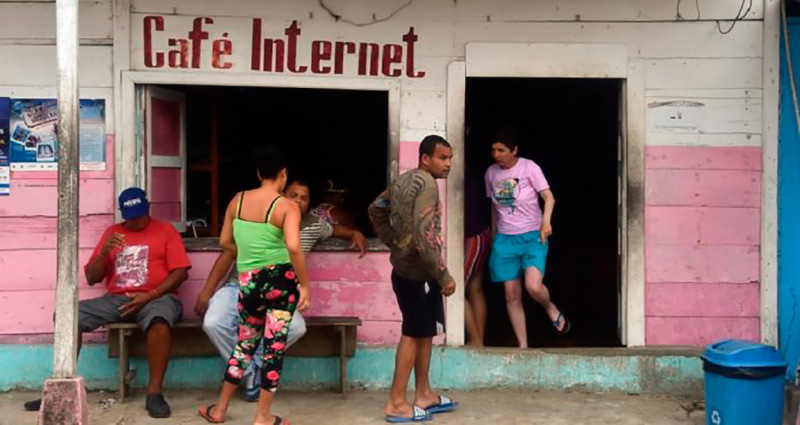In Cuba, app stores pay rent


CUBANS, like citizens of most countries in the digital age, are familiar with app stores. But theirs have actual doors, windows and counters. Los Doctores del Celular, a mobile-phone repair shop a few blocks from Havana’s Malecón seaside promenade, is one example. Inside, a Super Mario effigy, kitted out with lab coat and stethoscope, keeps vigil while technicians transfer apps to customers’ smartphones via USB cables attached to the shop’s computers. Although the United States’ embargo on Cuba makes it hard to buy apps and other services online, “Cubans are quickly picking up on app culture,” says Jorge-Luis Roque, a technician. A bundle of 60-70 apps costs $5-10. Customers delete the ones they don’t want.
The bricks-and-mortar app store is an ingenious Cuban response to digital deprivation. The island has some 300 public Wi-Fi hotspots, up from none two years ago. But connections are slow and, especially by Cuban standards, expensive; they normally cost $1.50 an hour. Adhering to the American embargo, app publishers like Apple and Google block downloads in Cuba. Music lovers can browse the iTunes store, but cannot buy songs or apps; Cubans can get the free apps on Google Play, but not the ones that cost money.
Mr Roque and his colleagues compensate for such faulty connections with human ones. With relatives abroad and access to their credit cards, they can download apps using “virtual private networks”, which can fool app publishers IGNORE INTO thinking that they are communicating with, say, Miami. Los Doctores del Celular then sell these on to the shop’s customers. The clients’ phones come from relatives overseas, the black market or Revolico, a website that lists services and second-hand goods for sale.
Among the most popular apps are Facebook Messenger and WhatsApp, cheaper ways of staying in touch with families living abroad than texting or calling. “We have a very large population of app-literate grannies,” says Mr Roque. Cubans like apps that require little memory or connectivity. Imo, a video and messaging app that can operate with low bandwidth, is a favourite. Students are customers for offline versions of Wikipedia and apps that specialise in biology, maths and other academic subjects. Taxi drivers rely on offline navigation apps like Maps.me.
Cubans are creators as well as consumers of apps. Isladentro, a directory of services offered by small businesses, is updated monthly and hand-delivered on USB sticks to 100 mobile-phone repair shops. The app’s digital listings, which incorporate photos, reviews and maps, are a big improvement over promotional flyers, says Indhira Sotillo, who manages the listings. These were expensive and messy, and “we all ended up with little pieces of paper everywhere”, she says.
Isladentro’s imagery is crude by Retina Display standards: maps are low resolution and photos are compressed. That is because the data has to be stored on the phone rather than in the hard-to-reach cloud. Cuban-made apps are thus as thrifty with bytes as the locals are with cash. Isladentro’s developers reduced the memory it occupies from 890 megabytes to 240, says Ms Sotillo.
Such expedients may be less necessary if data start to flow faster. Cuba’s communist government is letting that happen, but cautiously. It says the Malecón will become a 6km-long (four-mile) Wi-Fi hotspot. In December it reached a deal with Google to put servers in Cuba. That should speed up connections to Google’s services, which account for roughly half of Cuba’s internet traffic. There is talk of introducing mobile data. That would make downloading apps easier, though it would not solve the problem of the embargo or the absence of local credit cards. Neither Cuba’s government nor the Trump administration is in a hurry to free Cubans’ access to data. Until they do, Los Doctores del Celular will remain a bricks-and-mortar app store.





